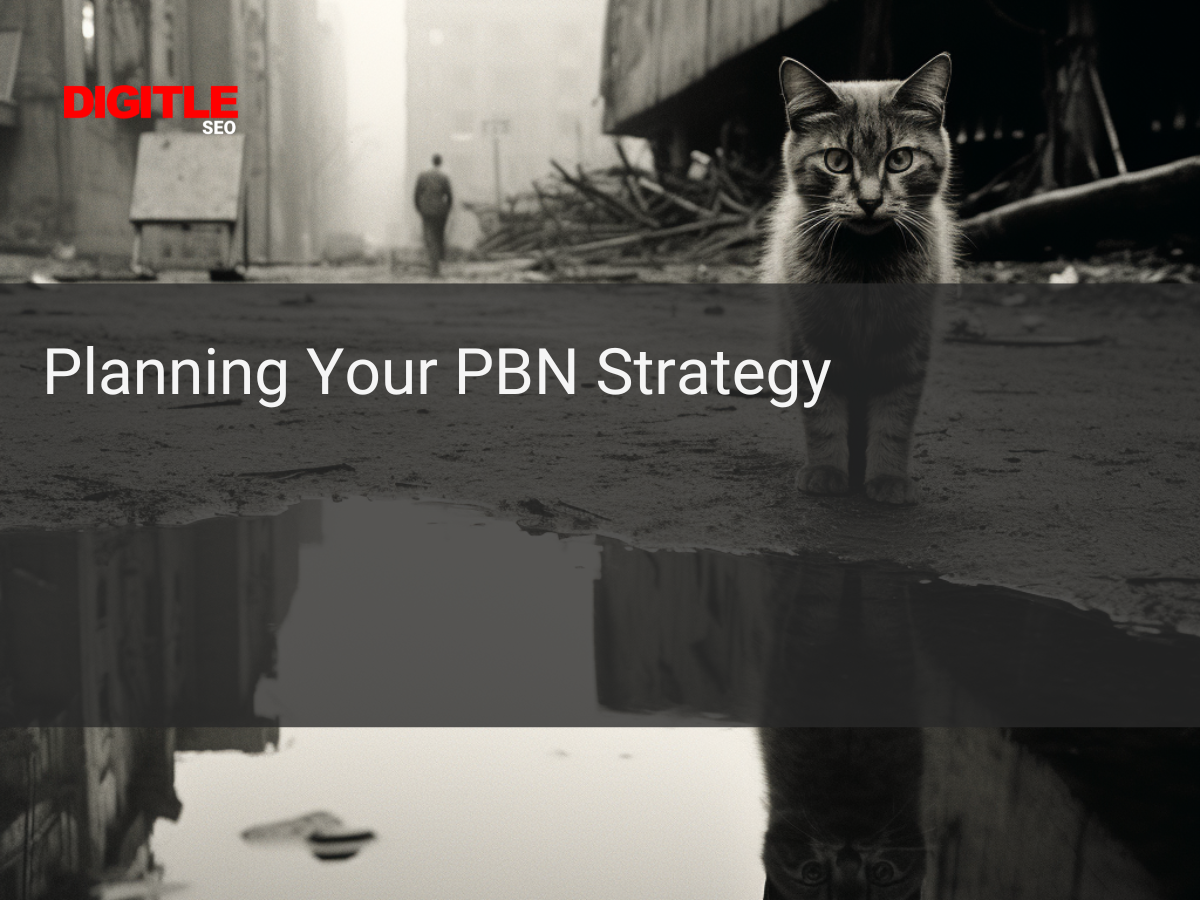What Is A Pbn? [Private Blog Network]
Unmasking PBNs: An In-depth Look at Private Blog Networks and Their Role in SEO
So, you're wondering, "What is a PBN (Private Blog Network)?" Simply put, a Private Blog Network (PBN) is a collection of websites owned by an individual or company for the primary purpose of providing backlinks to a single website to manipulate search engine rankings. This SEO strategy involves creating multiple blog sites with high domain authority that all link back to your main site in order to boost its visibility on Google.
Exploring this concept further will open up discussions about how it works, its benefits and drawbacks, and whether or not it's worth implementing as part of your digital marketing strategy. But before we dive into those details, let's start by breaking down the basics of what a PBN truly is.
What is a PBN?
A Private Blog Network (PBN) is essentially a set of websites used to build links to your website for the purpose of achieving higher ranking on search engine result pages. Here's what you need to know:
- A PBN consists of multiple blogs or sites, each owned by the same person or entity.
- All these sites link back to one main site - often referred as "money site" - with targeted keywords.
Features
| Feature | Description |
|---|---|
| Control over Content and Links | Owners have full control over themes, content, and backlinks in their network. |
| High Domain Authority | Sites within the network usually have high domain authority based on age, size, and quality content. |
Benefits
- SEO Boost: The primary benefit comes in SEO improvement since all links direct towards your main money site.
- Control Over Backlinks: Complete control means you can remove or change backlinks at any time.
- Monetization Opportunities: Besides promoting your own business/site, you can also monetize these blogs through ads.
Note: Despite its benefits, using PBNs carries certain risks including potential penalties from Google if detected as they violate Google’s guidelines for good quality links.
Why are PBNs Used?
PBNs, or Private Blog Networks, serve a specific purpose in the world of SEO. They're used for:
- Link Building: This is the primary reason why PBNs exist. Websites require high-quality backlinks to rank well on search engines. A network of blogs offers an efficient way to create these links.
- Authority Transfer: Blogs within a PBN often have higher domain authority due to their age and link profile. When they link out to other sites, they transfer some of this authority.
- Control Over Content and Links: With a private blog network, you control all aspects - content creation, linking strategy and more. This level of control can be beneficial in an SEO campaign.
Here's a simplified table that outlines why PBNs are used:
| Use | Description |
|---|---|
| Link Building | Create high-quality backlinks efficiently |
| Authority Transfer | Transfer authority from high DA blogs |
| Control Over Content & Links | Full control over strategic aspects |
Remember though - while effective if done right, using PBNs comes with its own risks such as penalties from search engines if caught!
The Benefits of Using a PBN
Using a Private Blog Network (PBN) comes with several advantages:
- Control Over Backlinks: It offers full control over how, where and when to place your backlinks. You are the master of your SEO destiny.
- High Domain Authority: Typically, domains in a PBN have high authority. This means you get quality backlinks pointing towards your main site.
Here's a quick view of few more benefits:
| Benefit | Description |
|---|---|
| Boost SERPs Rank | With strategic use, it can help boost Search Engine Results Page (SERP) ranking quickly. |
| Niche Relevance | A well-built PBN has niche relevance making links even more powerful. |
| Flexibility | It gives flexibility to build links at one’s own pace without worrying about natural link velocity. |
And then there are some numerical benefits as well:
- Speed: Quickly establish an online presence.
- Quantity: Get high volume of backlinks from different domains.
- Quality: Leveraging aged domains often yields better-quality backlinks compared to new ones.
As promising as these benefits seem, remember using PBNS is against Google’s Webmaster Guidelines and could lead to penalties if discovered by search engines algorithms or manual reviewers.
How to set up a PBN
Let's dive right into setting up your very own Private Blog Network. Make sure to follow these steps:
1. Domain Acquisition: Begin by purchasing expired or auctioned domains. Keep in mind, they should have high Domain Authority (DA), Page Authority (PA) and Trust Flow (TF).
2. Hosting Setup: Don't put all your eggs in one basket. Opt for different hosts for each of your websites.
3. Website Creation:
- Use varied Content Management Systems like WordPress, Joomla etc.
- Customize the themes and layouts so no two websites look alike.
4. Content Generation: Regularly publish unique content on each website that adds value for readers, not just search engines.
5. Link Building: Strategically place do-follow links back to your main website(s). Be careful not to overdo it!
For a clearer understanding, here's a comparison table showing what you should and shouldn't do:
| Do's | Don'ts |
|---|---|
| Purchase high DA/PA/TF domains | Buy new, zero authority domains |
| Use diverse hosting providers | Host all sites with one provider |
| Create unique content regularly | Duplicate or spin content from other sites |
| Purchase high DA/PA/TF domains | Buy new, zero authority domains |
| Build links strategically | Overuse outbound links |
Setting up a successful PBN isn’t about cutting corners - it’s about building something valuable while staying under the radar!
Choosing the Right Domains for Your PBN
When building a Private Blog Network (PBN), selecting high-quality domains is crucial. Here are some key points to consider:
- Domain Authority: Higher Domain Authority (DA) means better ranking potential.
- Backlink Profile: Domains with powerful backlinks from reputable sites can boost your SEO efforts.
- Relevance: The domain should be relevant to your niche or industry.
Here are steps you might follow when choosing a domain:
- Start by searching on domain auction websites.
- Shortlist domains based on DA, relevance and backlink profile.
- Conduct thorough research into each shortlisted domain's history using tools like Wayback Machine or Screenshots.com
- Avoid domains that have been used for spamming purposes in the past.
Remember, here's what to look for in a good PBN domain:
| Factor | Description |
|---|---|
| DA | 15+ |
| Relevance | Related to your niche |
| Backlinks | High quality and Relevant ones |
In conclusion, the process of selecting high-quality domains requires time & effort but it will pay off by boosting your site’s SEO performance!
Maintaining and Managing Your PBN
Maintaining and managing a Private Blog Network (PBN) is no easy task. But with the right strategies, you can make it work!
Here's what you need to know:
- Regularly Update Content: Fresh content keeps your PBN relevant. If the websites in your network are stagnant, search engines might devalue them.
- Ensure Unique Content: Duplicate or spun content can harm your SEO efforts. Always ensure each site on your network has unique and high-quality content.
- Diversify Hosting Providers: Using different hosting providers for each website in your network reduces the risk of leaving a digital footprint.
Consider this table as an example of how to manage various aspects of your PBN:
| Task | Frequency |
|---|---|
| Update Content | Weekly/Bi-weekly |
| Check Rankings | Monthly |
| Refresh Design | Yearly |
Always remember these points:
- Regular monitoring is key: Keep track of metrics like traffic, domain authority, and rankings.
- Avoid linking overkill: Too many outbound links from one site to another can raise red flags.
- Don't ignore user experience: Ensure all sites in your PBN are user-friendly and offer value to visitors.
Managing a successful PBN requires effort but by staying consistent with these steps, you'll maintain an effective network!
Best Practices for Using a PBN
When using a Private Blog Network (PBN), follow these best practices to maximize your SEO benefits and minimize risks:
- Unique Content: Each site in your PBN should feature high-quality, unique content. Duplicate or low-quality content can harm your SEO efforts.
- Diverse Hosting: Use different hosting providers for each website in the network to avoid leaving digital footprints.
- Different Domains: Register domains on different registrars to make the network appear unrelated.
- Varied Design: Ensure each website has a unique design layout, theme, and logo.
Here are some more detailed guidelines organized as dos and don'ts:
| Do's | Don'ts |
|---|---|
| 1. Maintain regular updates on all blogs. | 1. Avoid linking all sites together. |
| 2. Apply natural link building techniques. | 2. Don’t leave any footprint of ownership across websites. |
| 3.Use relevant links that add value to content. | 3.Don’t overuse anchor text; keep it diverse and organic |
Remember, while PBNs can offer short-term success in boosting rankings, they aren't recommended for long-term use due to potential Google penalties.
Wrapping Up
In essence, a Private Blog Network (PBN) is an intricate web of authority websites used to build links to your money site(s). This strategy amplifies the SEO ranking and visibility of your main website. However, it's paramount to tread carefully because Google frowns upon PBNs that aim to manipulate search results.
The value offered by PBNs can be immense if appropriately utilized. Despite the risks involved, many marketers find it worth their while due to the potential rewards in terms of rankings. Always remember though - quality should outshine quantity when building your network and creating content. Doing so ensures you stay within Google’s good graces while reaping all the benefits a well-managed PBN offers.




![Aged Domains Versus Expired Domains [What Is Better?]](https://lirp.cdn-website.com/7c941cf4/dms3rep/multi/opt/4-cde4d733-1920w.png)


